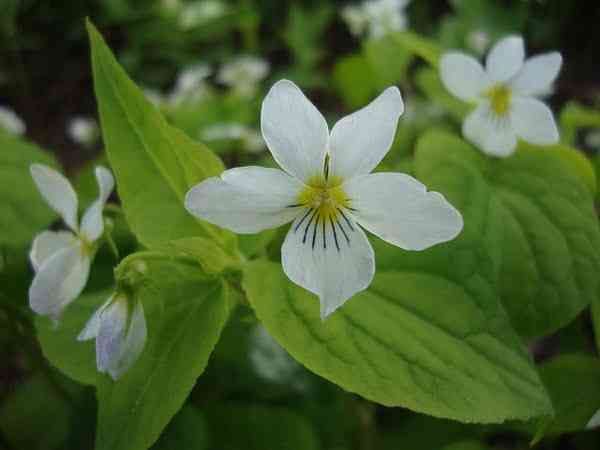Your cart is currently empty!
Tip on Using Garden Fabric In Your Landscape
Garden Fabric can prevent unwanted weeds, can make your garden maintenance easier by keeping weed and grass under control.
Your cart is currently empty!
Photo:
Anneli Salo, CC BY-SA 3.0, via Wikimedia Commons
Canada Violet, a native upright perennial forb, grows 8 to 16 inches tall on stems that might be smooth, green, somewhat angular, or covered in extremely fine hair. This variety is distinguished from other white violas by its flowers, which emerge from the upper leaf axils, and by its yellow petal bases. They are resilient down to roughly -25°C. This is a plant that tends to grow in abundance in hardwood forests (beech-birch-maple or maple-basswood-ash type), usually with sugar maple as a dominant species.
It grows in decidous forests with medium to wet, well-drained and humusy soils, in part shade, from Newfoundland to Alaska, and as far south as Georgia and Arizona in Canada and the United States. They can be found in rich mesic areas like floodplains. They produce stunning, fragrant white flowers with a purple tint for many months from summer to fall. The flowers are located at the tips of short, slender stalks, facing outward. From summer to fall, they have showy fragrant white tinged with purple flowers.
Botanical Name: Viola canadensis
En français: Violette du Canada
Colour:
Sun / Shade:
Water: Keep ground moist, but do not overwater
Height:
Width:
Pollinators:
Use Viola canadensis in forest gardens, wildflower/native plant gardens, or naturalised areas where it thrives. They are not suitable for rock gardens or borders due in part to their proliferative characteristics.
Unlike other violets, they do not spread via runners. They may, however, band together. They self-seed so readily that they are mistaken for weeds.

Canada violet can be easily grown in full sun or moderate shade on healthy soil. It prefers a cool location in humus-rich, wet soil with some shade or dappled light and protection from hot breezes. Canada Voilet tolerates sandstone and limestone soils, but it turns chlorotic if the pH is too high. They favor pH values of 6 to 6.5.
For violet growth, cold summer conditions are preferable to hot summer conditions. They do well in shady forest gardens but are likely too invasive for rock gardens or borders.
The best time to start Canada violet seeds in a cold frame is in the fall. In the spring, when the seedlings are large enough to handle, prick them out into separate pots and plant them outside for the summer.
Divide them in the autumn or right after flowering. However, it is better to pot up smaller divisions and grow them in light shade in a greenhouse or cold frame until they are growing away nicely. Larger divisions can be put out directly into their permanent locations. In the summer or the next spring, plant them out.
Young leaves and flower buds are edible both raw and cooked. When boiled as greens, they have a very mild flavour and are best combined with other leaves that have a stronger flavour. The leaves are a refreshing substitute for tea.
Always consult a professional before using a plant for medicinal purposes. The roots have been used to make a tea that has been shown to relieve bladder pain. They’ve also been used as a poultice and to treat boils and skin abrasions.
Garden Fabric can prevent unwanted weeds, can make your garden maintenance easier by keeping weed and grass under control.
Learn about coneflower propagation and care for beautiful, tough plants that attract butterflies, bees, and birds to your garden!
Horseradish is exceptionally easy to grow, highly productive, and has a lot of other uses beyond making wasabi, and can clear sinuses.
Learn how keystone plants play a crucial role in supporting wildlife and preserving biodiversity in Ontario gardens.
Experience excellence beyond North American borders! The VBG was awarded the 2022 "Garden Excellence Award" presented by the APGA. Now's your chance to help us take the Garden to even higher levels of excellence as a top tourism generator & cultural icon in Puerto Vallarta & Mexico. Join us!
Learn how to attract black-capped chickadees to your garden by planting native trees and flowers that provide food and nesting spaces.
GardeningCalendar.ca gets some funding from advertisers. If you click on links and advertisements at no cost to you, the site may receive a small commission that helps fund its operation.
© 2025 J&S Calendars Ltd.
Leave a Reply
You must be logged in to post a comment.